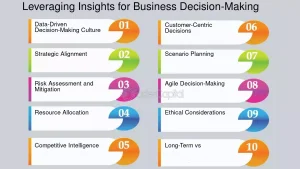India’s Rapid Adoption of Electric Vehicles (EVs) in 2025
Introduction
India’s rapid adoption of electric vehicles (EVs) in 2025 is nothing short of revolutionary. As the world shifts towards greener alternatives, India is making remarkable strides to embrace electric mobility. From policy changes to shifting consumer preferences, the nation is gearing up for a future driven by clean energy. But what’s really fueling India’s rapid adoption of electric vehicles (EVs) in 2025? Let’s dive right in!
Government Policies and Incentives

One of the biggest reasons behind India’s rapid adoption of electric vehicles (EVs) in 2025 is strong government support. The Indian government has rolled out several policies under the FAME II scheme (Faster Adoption and Manufacturing of Hybrid and Electric Vehicles) to encourage EV adoption. From hefty subsidies to reducing GST rates on EVs from 12% to 5%, the government is clearly pushing the transition.
Additionally, many states are joining the bandwagon with their own policies. For example, Delhi’s EV Policy 2025 aims to ensure that 25% of all vehicles sold in the city are electric by 2025. Tools like E-Amrit, a web portal by NITI Aayog, offer all the necessary information on incentives, charging stations, and financing options for EV buyers.
To top it off, the Production Linked Incentive (PLI) Scheme aims to boost local manufacturing of EV components, including advanced batteries, reducing reliance on imports and making EVs more affordable.
Changing Consumer Preferences
Indian consumers are no longer just looking at vehicles as a means of transport but also considering their environmental impact. The increasing awareness about climate change, backed by educational campaigns and social media advocacy, is pushing people towards electric vehicles.
And it’s not just about being environmentally conscious. Rising fuel prices have made owning traditional fuel vehicles less economical. On the other hand, EVs offer low maintenance costs, government rebates, and savings on fuel, making them a very attractive option.
Even fleet operators are transitioning to EVs. Companies like BluSmart and Ola Electric are rapidly expanding their electric fleets, providing affordable and eco-friendly travel options to the masses.
Key Industry Players and Innovations
Several companies are leading the charge when it comes to India’s rapid adoption of electric vehicles (EVs) in 2025. Tata Motors has captured a significant market share with models like the Tata Nexon EV and Tata Tiago EV, offering reliable and budget-friendly options.
Startups like Ather Energy are also making headlines with their innovative Ather 450X scooter, which boasts impressive range, fast charging, and a sleek, modern design. Ola Electric is making waves with its affordable scooters aimed at the mass market, while established brands like Mahindra Electric continue to push the boundaries of EV technology.
Additionally, various tools and platforms are now available to enhance the user experience. For example, PlugShare helps users find nearby charging stations, while apps like Recharge India assist with locating both public and private charging points.
Challenges and Roadblocks
Despite the tremendous growth, there are still some roadblocks to overcome. The biggest challenge remains the lack of widespread charging infrastructure. While urban areas are quickly adapting, rural parts of India are lagging behind.
Another challenge is the high initial cost of electric vehicles. Though prices have reduced significantly over the years, the average consumer still finds them relatively expensive. On top of that, concerns about battery life and disposal are yet to be adequately addressed.
But companies are already working on solutions. Battery-swapping stations, which allow users to replace their drained battery with a fully charged one, are slowly gaining traction. Additionally, innovative financing models are being introduced to make EVs more accessible.
Future Predictions and Market Growth

The future of electric vehicles in India looks incredibly promising. Experts predict that by 2030, EVs could account for over 30% of all vehicle sales in India. With continuous government support, advancing technology, and improving infrastructure, this projection doesn’t seem far-fetched.
We are also seeing more companies entering the market, introducing affordable models for the masses. For instance, Simple Energy and Hero Electric are planning to roll out budget-friendly models aimed at lower and middle-income groups.
Furthermore, advancements in battery technology and charging infrastructure are expected to drive more people toward EVs. With big companies like Reliance and Adani investing heavily in charging networks, accessibility is bound to improve.
Conclusion
India’s rapid adoption of electric vehicles (EVs) in 2025 is a remarkable achievement, driven by a combination of favorable government policies, evolving consumer preferences, and innovative contributions from industry players. The transition is far from complete, but the progress made so far is undeniable.
